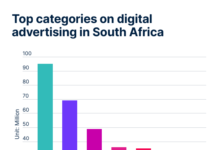Jacki McEwen-Powell, founding partner at Eclipse Communications, discusses how critical the role of communications is and how it has evolved, with key values and characteristics needed to take us forward. She unpacks the values and characteristics of an effective communications team – whether it is an external PR agency or internal communications division.
In a business landscape that has undergone a major metamorphosis, the role of communications has become critical. The question is: how does your communications team measure on delivering quality content that engages your stakeholders, generates leads and enhances your social licence to operate?
Six trending traits of an exceptional communications team
Creating solutions-driven content
Demand Gen Report’s 2020 Content Preferences Study found that 67% of respondents rely on content to inform their purchase decisions. In addition, Curata reveals that 74% of companies say that content marketing increased both the quantity and quality of its marketing leads.
Apart from educating consumers to become more discerning, one of the key functions of the communications team is to craft content that solves specific problems. The demand for exceptional skill on the part of the communications practitioner to understand the purpose of content and provide a solution to a problem is more important than ever.
Being able to pivot at speed
When Covid-19 hit, the brands that survived did so because they were able to adapt their offerings to accommodate the dramatically altered business environment. They found unique ways of delivering their services despite lockdown restrictions. Key to this was communicating changes in strategy and tactics to their customers, employees and suppliers. PR and communications teams had to pivot even more quickly than their clients to provide the necessary business support. This agility has become a prerequisite for PR and communications teams that are committed to ensuring they (and the brands they serve) remain relevant.
Omni-channel thinking
Eloquently noted by industry expert and speaker, Bud Caddel, ‘Digital is a participatory layer of all media that allows users to self-select their own experiences.’ Many communications teams are attempting to use digital as the panacea for all their communications challenges. According to Sasol Group Digital Platforms Manager, MJ Khan, the best communications teams first ask: what do we want to achieve? With this in mind, communications strategies should be created around answering the question, rather than immediately exploiting digital channels.
This calls for channel-agnostic PR and communications practitioners, who understand the importance of testing the feasibility of a campaign and then seeking the most effective channel to achieve the desired outcome.
Exceptional brand knowledge
Effective communications teams immerse themselves completely in the brands they serve. They do this by gaining a deep understanding of the brand’s vision, mission and purpose, and the objectives of each division.
Good PR and communications teams also spread their tentacles far and wide to gain an understanding of the broader industry the brand operates in; the competitor landscape; and the effects of economic and market fluctuations. This depth of understanding means the difference between superficial campaigns that don’t gain traction or executions that get to the heart of the matter and generate brand love.
The discipline of listening
Management consultant and author Peter Drucker said, ‘Listening is not a skill; it is a discipline.’ According to CreditDonkey, people spend between 70% to 80% of their days engaged in some form of communication, with around 55% of their time devoted to listening. However, most only remember 17% to 25% of the things they listen to.
Top communications professionals are masters in the art of listening. Those who engage with their brands’ communities and actively listen to the conversations in their ambit will be able to deliver strategies that are sincere, relevant and that speak to real issues experienced by real people.
A proactive approach
PR and communications professionals need to push boundaries, design unique strategies, and create solutions before problems arise. There is no place in the industry or business world for tick-box approaches anymore. Being proactive means continuous active interaction with clients and their target markets, taking the initiative to identify challenges and achieve deliverables, and selecting the right platforms to achieve their communications ambitions. A strong PR or communications team will better control the content presented to consumers, reducing the need for reactive PR in response to negative feedback.
ECLIPSE COMMUNICATIONS
eclipsecomms.com










